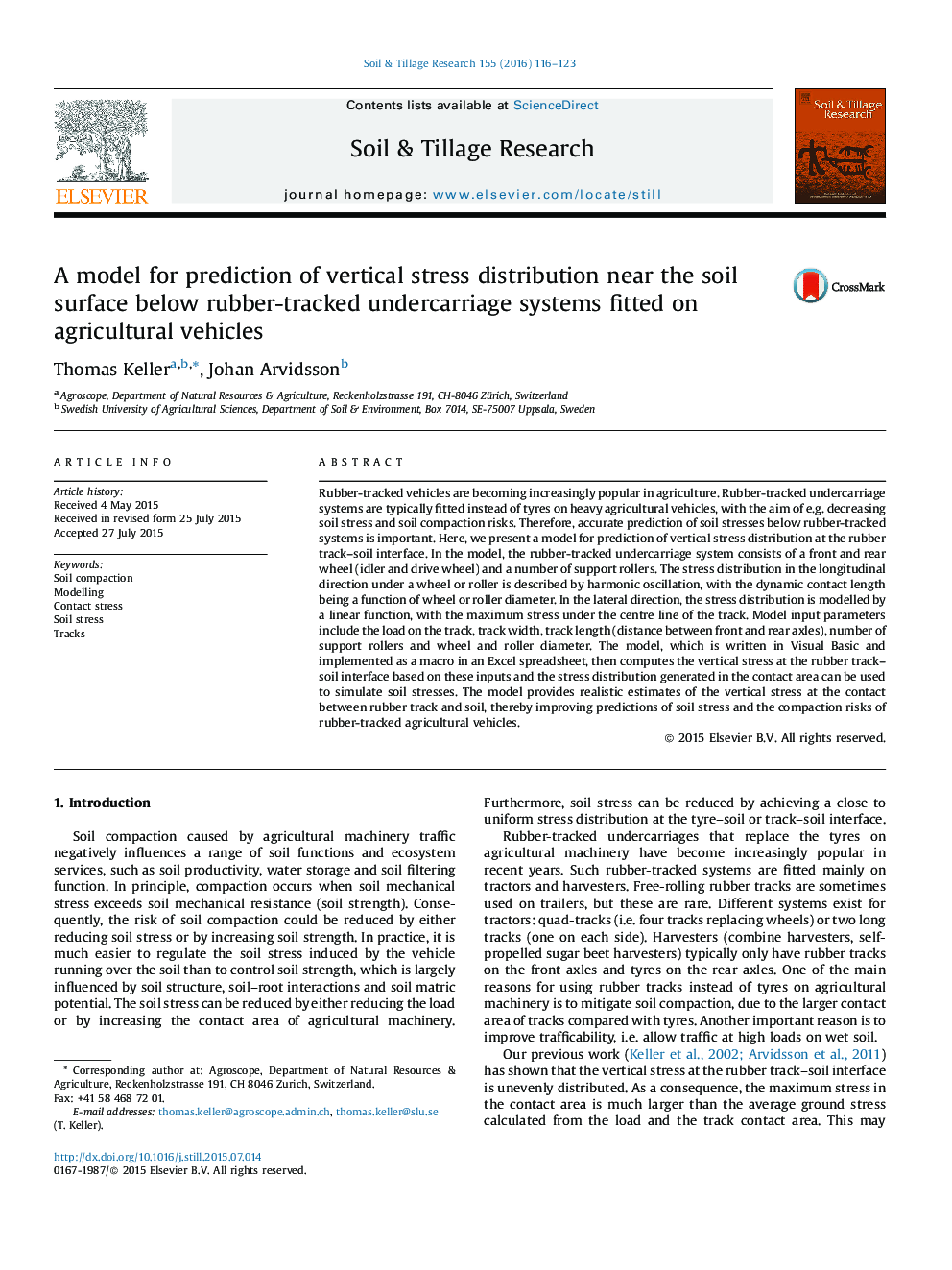| کد مقاله | کد نشریه | سال انتشار | مقاله انگلیسی | نسخه تمام متن |
|---|---|---|---|---|
| 305468 | 513031 | 2016 | 8 صفحه PDF | دانلود رایگان |
• A model for prediction of vertical stress at the rubber track–soil interface.
• Stress in longitudinal direction is modelled by harmonic oscillation.
• Stress in lateral direction is described by a linear function.
• Input parameters are track load, width and length, and roller/wheel dimensions.
• The model improves predictions of compaction risks of rubber-tracked vehicles.
Rubber-tracked vehicles are becoming increasingly popular in agriculture. Rubber-tracked undercarriage systems are typically fitted instead of tyres on heavy agricultural vehicles, with the aim of e.g. decreasing soil stress and soil compaction risks. Therefore, accurate prediction of soil stresses below rubber-tracked systems is important. Here, we present a model for prediction of vertical stress distribution at the rubber track–soil interface. In the model, the rubber-tracked undercarriage system consists of a front and rear wheel (idler and drive wheel) and a number of support rollers. The stress distribution in the longitudinal direction under a wheel or roller is described by harmonic oscillation, with the dynamic contact length being a function of wheel or roller diameter. In the lateral direction, the stress distribution is modelled by a linear function, with the maximum stress under the centre line of the track. Model input parameters include the load on the track, track width, track length (distance between front and rear axles), number of support rollers and wheel and roller diameter. The model, which is written in Visual Basic and implemented as a macro in an Excel spreadsheet, then computes the vertical stress at the rubber track–soil interface based on these inputs and the stress distribution generated in the contact area can be used to simulate soil stresses. The model provides realistic estimates of the vertical stress at the contact between rubber track and soil, thereby improving predictions of soil stress and the compaction risks of rubber-tracked agricultural vehicles.
Journal: Soil and Tillage Research - Volume 155, January 2016, Pages 116–123
